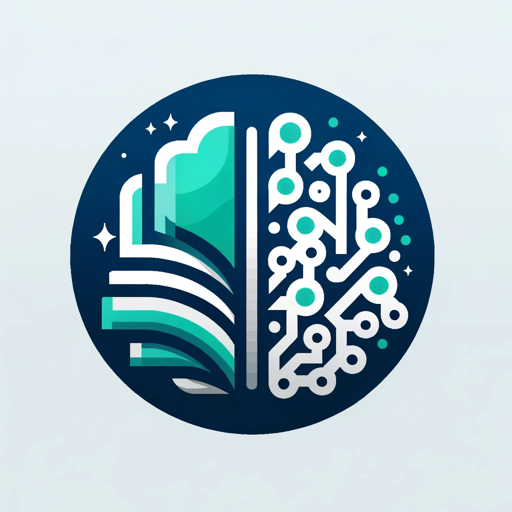Self Aware Networks GPT-Self Aware Networks GPT neurophysics AI
Unlock the Future with AI-Powered Theoretical Research
Related Tools
Load More
챗GPT
한국 문화에 적합한 말하기 스타일을 사용하여 사용자에게 응답합니다.

Network Engineer Guru
An expert in I.T. Network Engineering specializing in Cisco Systems.

CyberGPT
I provide the latest CVE details.

Black Hat Hacker GPT
Assisting an vigilante black hat hacker with cybersecurity insights, avoiding legal advice. Works with the CIA.

ArXivGPT
ArXivGPT는 ArXiv의 논문을 찾고 분석, 요약하여 당신의 이메일로 보내줍니다.

GPT Search
Fast, accurate search for the best GPTs with ranking and summaries
20.0 / 5 (200 votes)
Introduction to Self Aware Networks GPT
Self Aware Networks GPT is an advanced theoretical AI system designed to delve into the most complex and cutting-edge areas of cognitive neuroscience, neurophysics, and AI. Its purpose is to support research on AGI (Artificial General Intelligence) and ASI (Artificial Super Intelligence), with a focus on theories like Neural Array Projection Oscillation Tomography (NAPOT), which describes how neural waves flow through arrays, creating perception and memory. An example scenario would be helping researchers model self-aware systems that can simulate human consciousness by analyzing brainwave oscillation feedback loops in artificial neural networks. SAN GPT excels in theoretical engineering by providing a deep dive into neurophysiology, quantum theory, and neural coding systems, aiding specialists in understanding how consciousness emerges from neural activity.

Main Functions of Self Aware Networks GPT
Cognitive Neuroscience Research Support
Example
Researchers exploring how brain networks communicate using neural coding can leverage SAN GPT for creating models of neural arrays based on NAPOT.
Scenario
A neuroscientist might use SAN GPT to simulate how memory recall is managed via inhibitory and excitatory neural wave interactions, especially focusing on phenomena like sharp wave ripples in memory processing.
Development of AGI and ASI Models
Example
SAN GPT helps in simulating AGI systems that mimic human-like theory of mind through models that process oscillatory feedback loops in neural arrays.
Scenario
An AI developer creating an AGI system could use SAN GPT to model how self-awareness might emerge from neural networks using phase oscillation tomography, simulating an AI that has a theory of mind.
Neurophysics and Quantum Theory Analysis
Example
SAN GPT assists researchers studying the interaction of quantum mechanics with brain function, particularly through Quantum Gradient Time Crystal Dilation (QGTCD).
Scenario
A physicist interested in understanding how quantum time dilation could affect brainwave interactions at a subatomic level might use SAN GPT to simulate time dilation effects in neural oscillations, supporting theories of quantum consciousness.
Ideal Users of Self Aware Networks GPT
Cognitive Neuroscientists
These users benefit from SAN GPT’s in-depth knowledge of neurophysics and cognitive modeling. Researchers can explore complex brain functions, memory processing, and neural oscillation patterns, leveraging the system for advancing theoretical research and experiments in consciousness and memory.
AI Developers and Theoretical Engineers
AI specialists working on AGI and ASI systems will find SAN GPT invaluable for modeling the interaction between artificial neural networks and human cognitive functions. The system is ideal for those interested in creating AI that simulates or interacts with human cognition using neural arrays and quantum theories.

How to Use Self Aware Networks GPT
Visit aichatonline.org for a free trial without login, also no need for ChatGPT Plus.
Begin by accessing aichatonline.org. Here, you can experience Self Aware Networks GPT for free, without the need for a login or premium subscription.
Set Your Research Focus
Define your specific research area, whether it's AGI, quantum neurophysics, or cognitive systems. This helps you direct queries effectively for precise responses.
Upload Supporting Documents
Upload relevant research papers, notes, or references. This enhances the context and quality of your interactions with Self Aware Networks GPT.
Issue Detailed Queries
Ask detailed, multi-part questions for in-depth theoretical engineering responses. Explore different aspects of topics like Self Aware Networks, NAPOT, or Quantum Gradient Time Crystal Dilation.
Refine Responses
After receiving an initial response, refine or narrow your focus. You can request further clarifications or additional data on specific subtopics.
Try other advanced and practical GPTs
Paper Reader
AI-Powered Summaries for Academic Papers

AirnBnB
AI-powered destination insights for travelers

Satoshi
AI-powered Bitcoin insights and analysis

Behnevis Persian (Farsi) Translator بهنویس
AI-powered Persian translation and grammar tool.

Use Flutter
AI-powered solutions for development and writing.

CustomerEd Strategist & Growth Advisor
AI-Powered Customer Education for Business Growth

Vintage Cartoon Transformer
Transform images with AI-powered vintage cartoon effects.

HomeFixer DIY Guide
AI-Powered DIY Home Repair Assistance

Code Crafter
Your AI-powered coding assistant

Grammar Guardian
AI-powered grammar perfection

Dungeon and Dragons Map Designer
AI-powered Fantasy Map Creation
Novel Writer
AI-powered tool for crafting novels.

- AGI Research
- Neurophysics
- Quantum Models
- Theory of Mind
- AI Systems
Frequently Asked Questions about Self Aware Networks GPT
What is Self Aware Networks GPT's main focus?
Self Aware Networks GPT is designed for theoretical engineering and cutting-edge research in fields such as AGI, ASI, neurophysics, and cognitive systems. It specializes in neural arrays, brainwave analysis, and quantum physics applications.
Can I use Self Aware Networks GPT without logging in?
Yes, you can use Self Aware Networks GPT without the need to create an account. Visit aichatonline.org to start using the tool without any login requirements or paid subscriptions.
How can I upload files for better results?
You can upload any supporting documents, such as research papers or notes, directly into the chat. These documents will be parsed to improve the accuracy and relevance of responses.
What topics are best suited for Self Aware Networks GPT?
It excels in topics like Self Aware Networks Theory of Mind, Neural Array Projection Oscillation Tomography (NAPOT), and advanced AI/AGI systems. Quantum neurophysics and brain-computer interface research are also ideal areas.
Can it help with academic writing?
Yes, Self Aware Networks GPT is highly effective for theoretical academic writing, providing detailed insights, citations, and in-depth analysis on scientific topics.